Vermont may be the 6th smallest state in the United States, but it’s known for its abundance of green forested areas. Its bird species list is over 380 due to the vast hardwood forests that cover more than three-fourths of the state. The state of Vermont is also known for its large number of outdoor enthusiasts and nature conservation. With over 80 wildlife management areas totaling over 133,000 acres of land, it seems like there’s a never-ending list of places for visiting or local birdwatchers to visit. That’s why we’ve come up with a list of Vermont’s best birdwatching spots. No matter the time of year, Vermont always has a variety of birds to observe and check off your birdwatching list.
1. Herrick’s Cove
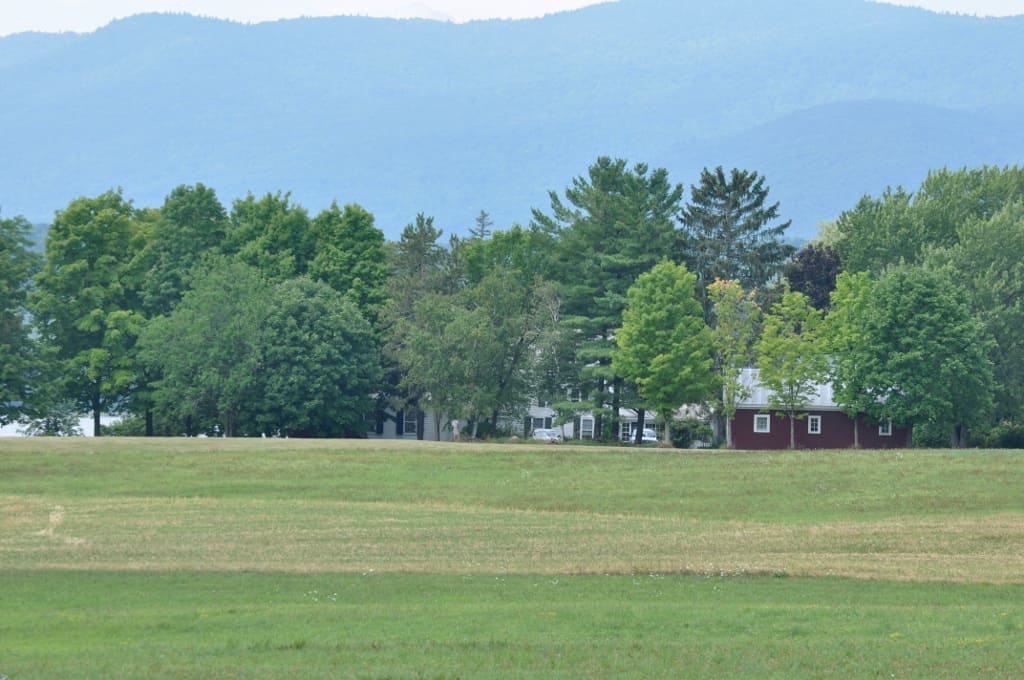
Herrick’s Cove features a wide variety of habitats that are ideal for birdwatching.
©Magicpiano / CC BY-SA 3.0 – License
| Location | Hours | Entrance Fee |
|---|---|---|
| 42 Herrick’s Cove Road, Bellows Falls, VT 05101 | Sunrise to sunset | Free |
Herrick’s Cove, which has been labeled an important bird area, has a list of more than 225 species of bird that have been spotted in the area. You can find Herrick’s Cove, where the Williams River enters the Connecticut River in the town of Rockingham. This wildlife area consists of multiple habitats like marshes, floodplains, forests, river channels, wetlands, and agricultural fields. These habitats provide feeding and resting areas for all kinds of birds, especially during the migration period.
Ducks, grebes, double-crested cormorants, and ospreys are commonly spotted in the spring and fall. During May, a wide array of songbirds, thrushes, and warblers are found in the area. The most common nesting birds spotted here include marsh wrens, yellow warblers, chestnut-sided warblers, swamp sparrows, pine warblers, willow flycatchers, American bitterns, and alder flycatchers. Bald eagles can also be spotted in this area year-round.
2. Pomainville Wildlife Management Area
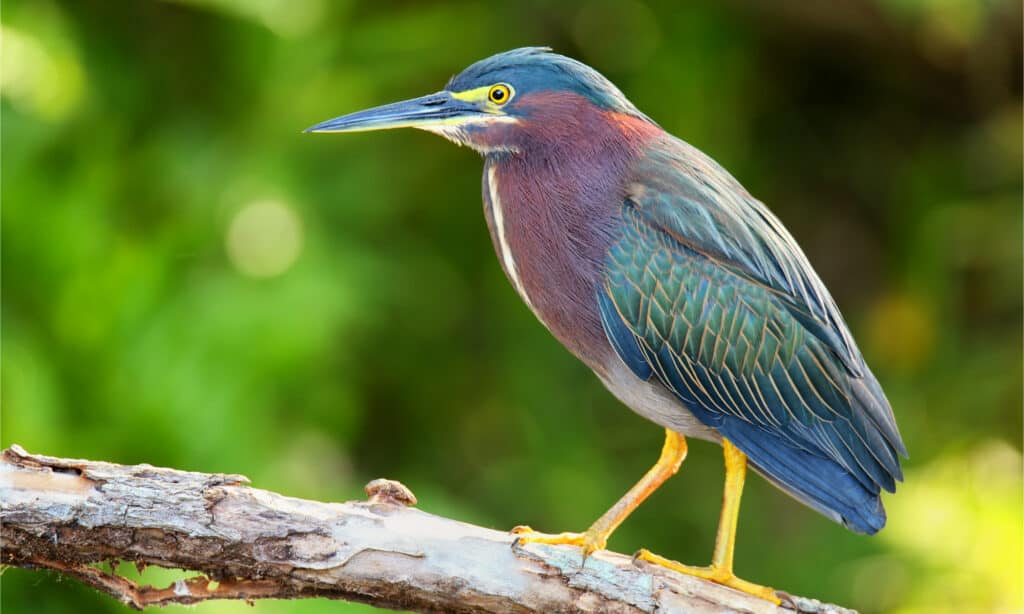
Green herons use bait to catch prey.
©Don Mammoser/Shutterstock.com
| Locations | Hours | Entrance Fee |
|---|---|---|
| 7551 US-7 #7417, Sudbury, VT 05733 | Sunrise to sunset | Free |
Located along the banks of Otter Creek is the Pomainville Wildlife Management Area. Here, birders come for the chance to spot a variety of grassland birds like bobolinks and eastern meadowlarks. The habitats found within the area include grasslands, wetlands, shrublands, floodplain forests, and upland forests.
Each habitat has a variety of species, like mallards, American bitterns, green herons, pied-billed grebes, and snipes, which can be observed in or near the ponds. Within the trees along Otter Creek, birdwatchers can spot species like Baltimore orioles, blue-gray gnatcatchers, alder and willow flycatchers, and red-eyed and yellow-throated vireos. The grasslands provide essential nesting areas for bobolinks, eastern meadowlarks, and Savannah sparrows during the spring and fall migrations.
3. West Rutland Marsh

The West Rutland Marsh is an extensive stretch of cattail marsh located along the Castleton River.
©iStock.com/morgainbailey
| Location | Hours | Entrance Fee |
|---|---|---|
| Water St, West Rutland, VT 05777 | Always open through the year | Free |
Designated an Important Bird Area, the West Rutland Marsh is an extensive stretch of cattail marsh located along the Castleton River. Other habitats besides marshes in the area include floodplain forests, shrubs, peatlands, and rivers. Over 200 species of bird have been spotted here, and the area has become a favorite for local birders.
The West Rutland Marsh provided essential breeding habitats for rare and priority species like the Least Bittern, Virginia rails, pied-billed grebes, and common moorhens. This wildlife is home to a number of waterfowl and wetland birds. Some of the more commonly spotted birds here are marsh wrens, warbling vireos, hermit thrushes, American black ducks, Canadian warblers, and Wilson’s snipes.
4. Shelburne Bay Park
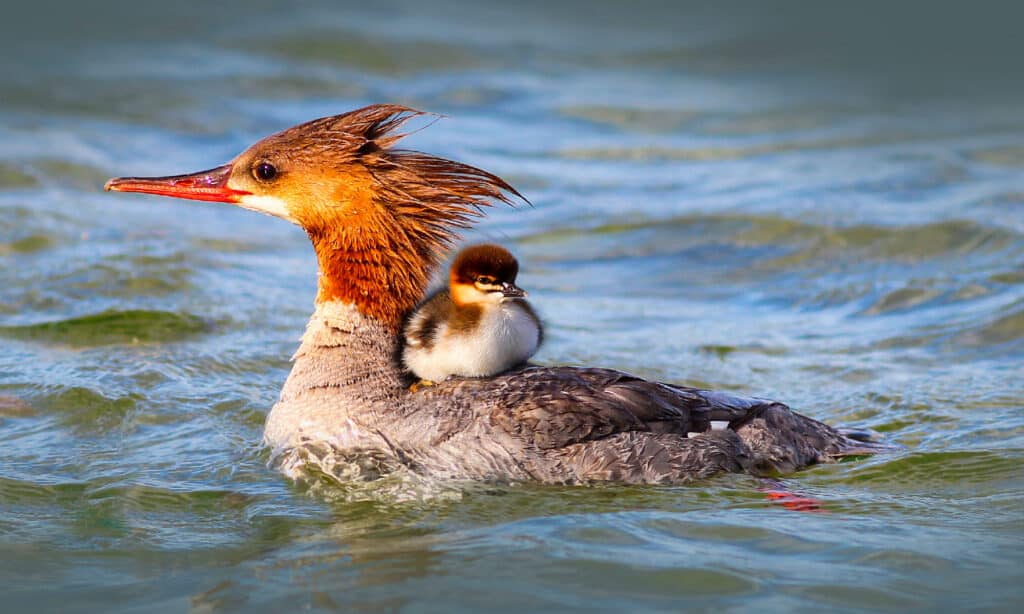
Female common mergansers have cinnamon-colored heads and crests.
©iStock.com/Anna39
| Location | Hours | Entrance Fee |
|---|---|---|
| 1230 Bay Rd, Shelburne, VT 05482 | Sunrise to sunset | Free |
The 104-acre park known as Shelburne Bay Park is located along Shelburne Bay, just south of Downtown Burlington. Over 200 species of bird have been spotted here, making it a worthwhile visit for local birdwatchers. Waterfowl such as ducks and geese make Shelburne Bay their home during the winter months. Other winter waterfowl that are commonly spotted include black-billed gulls, ring-billed gulls, herring gulls, common mergansers, common goldeneyes, and buffleheads.
5. Button Bay State Park
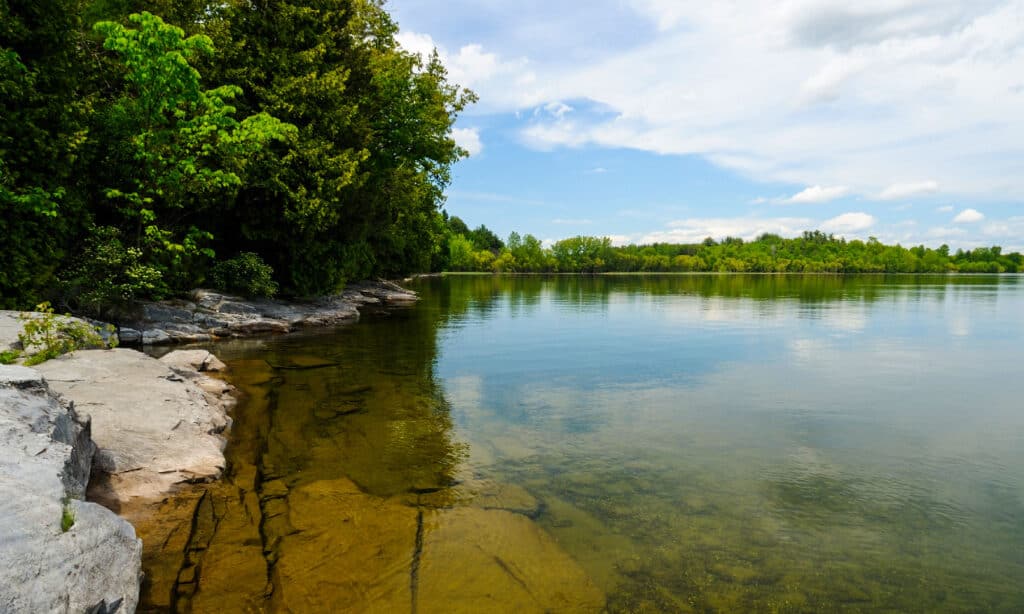
Button Bay State Park provides birdwatchers with the opportunity to spot up to 318 species of birds, including a wide variety of waterfowl.
©Rob Rudeski/Shutterstock.com
| Location | Hours | Entrance Fee |
|---|---|---|
| 5 Button Bay State Park Rd, Vergennes, VT 05491 | 10 AM to sunset | $4 per adult and $2 per child (ages 4-13) |
The 253-acre state park known as Button Bay State Park is located along the shore of Lake Champlain. Overlooking over 130 miles of Lake Champlain, this park offers great opportunities for birdwatchers to spot a variety of waterfowl. Along with the lake, this area has habitats like marshes and hardwood forests that are home to an array of birds. Around 318 species of bird have recorded sightings here.
From fall through spring, many species of waterfowl, especially ducks, are seen in migration and even the occasional rarity. Commonly observed species include the American black ducks, snow geese, brants, mallards, ring-necked ducks, lesser scaups, common loons, and common goldeneyes. Bald eagles are spotted pretty regularly as well.
6. Little Otter Creek Wildlife Management Area

American bitterns can be difficult to spot in reedy marshes due to their coloring and markings, which serve as effective camouflage.
©iStock.com/Marianne Pfeil
| Location | Hours | Entrance Fee |
|---|---|---|
| State Forest Rd, Ferrisburgh, VT 05456 | Sunrise to sunset | Free |
Little Otter Creek Wildlife Management Area, designated an Important Bird Area, serves as a conservation sight for a variety of wildlife and a critical habitat for an array of birds. This area contains more than 1,000 acres of freshwater marshlands, wetlands, and hardwood forest habitat. Osprey platforms have been installed, so the endangered ospreys can use this area as a breeding site. Other commonly sighted species include the pied-billed grebes, common moorhens, Virginia rails, soras, American bitterns, American coots, and black-crowned night herons.
7. Missisquoi National Wildlife Refuge
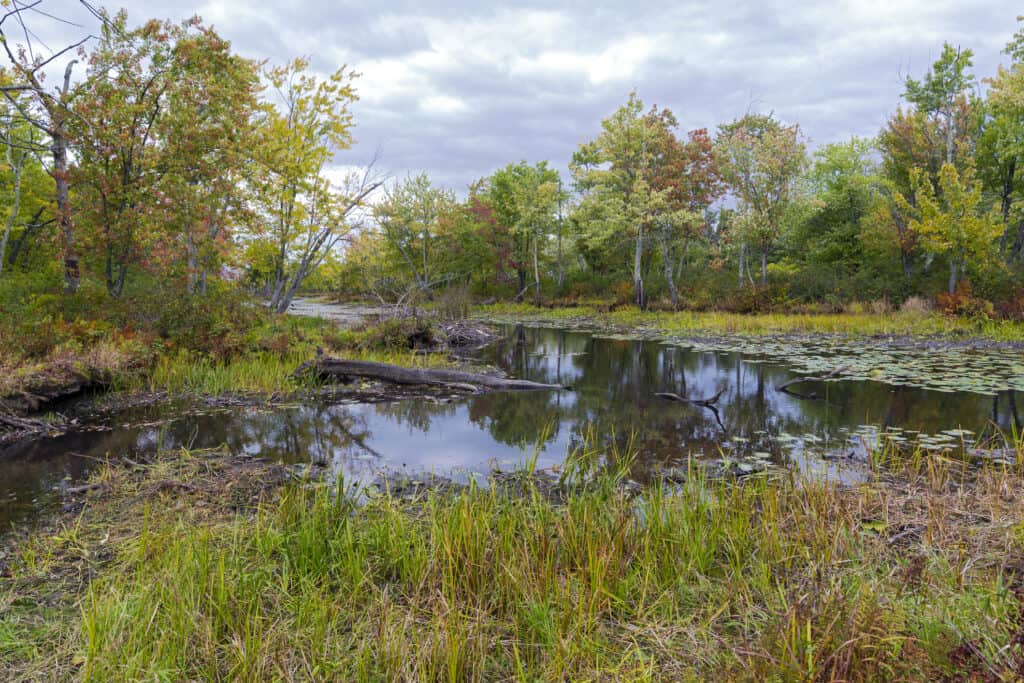
The variety of habitats makes the Missisquoi NWR the perfect place for spotting various species.
©iStock.com/jferrer
| Location | Hours | Entrance Fee |
|---|---|---|
| 29 Tabor Road, Swanton, VT 05488 | Sunrise to sunset | Free |
Near the Canadian Border is the Missisquoi National Wildlife Refuge. Consisting of 7,232 acres of land, birders can walk on one of the many trails available and spot a variety of bird species. Habitats in this area include wetlands, bogs, floodplain forests, and grasslands. Many birdwatchers come to this wildlife refuge in hopes of spotting the elusive black tern, which is currently listed as an endangered species.
The variety of habitats makes Missisquoi NWR the perfect place for spotting a variety of species. Grassland habitats here are home to bobolinks, meadowlarks, Savannah sparrows, and during the summer, American bitterns and Wilson’s snipes. Mississisquoi is also home to the largest concentration of waterfowl on Lake Champlain. Some of the most common waterfowl here are wood ducks, mallards, green-winged teals, and ring-necked ducks.
8. Dead Creek Wildlife Management Area
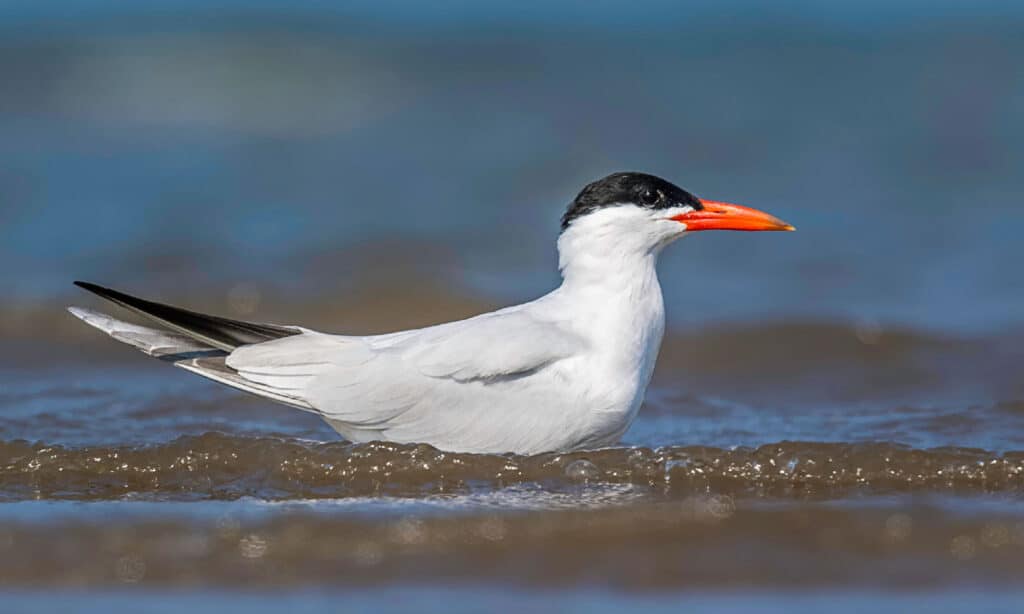
The Caspian tern is the largest tern species in the world.
©Sriram Bird Photographer/Shutterstock.com
| Location | Hours | Entrance Fee |
|---|---|---|
| 966 VT-17, Addison, VT 050491 | Always open through the year | Free |
Located near Lake Champlain is the Dead Creek Wildlife Management Area. This area is made up of habitats like fields, grasslands, cultivated farmlands, wetlands, and hardwood forests. Here, birdwatchers can enjoy observing a variety of wintering species like short-eared owls, snow buntings, rough-legged hawks, snowy owls, and Northern shrike. In the fall, thousands of snow geese come here to rest and feed in the fields of Dead Creek. During nesting season, birdwatchers can spot species like wood ducks, Caspian terns, marsh wrens, Virginia rails, soras, ospreys, bald eagles, and American bitterns.
Up Next:
- The 12 Biggest Lakes in Vermont
- 10 of the Most Breathtaking Waterfalls in Vermont
- The Longest Biking Trail in Vermont
The photo featured at the top of this post is © iStock.com/jferrer
Thank you for reading! Have some feedback for us? Contact the AZ Animals editorial team.






